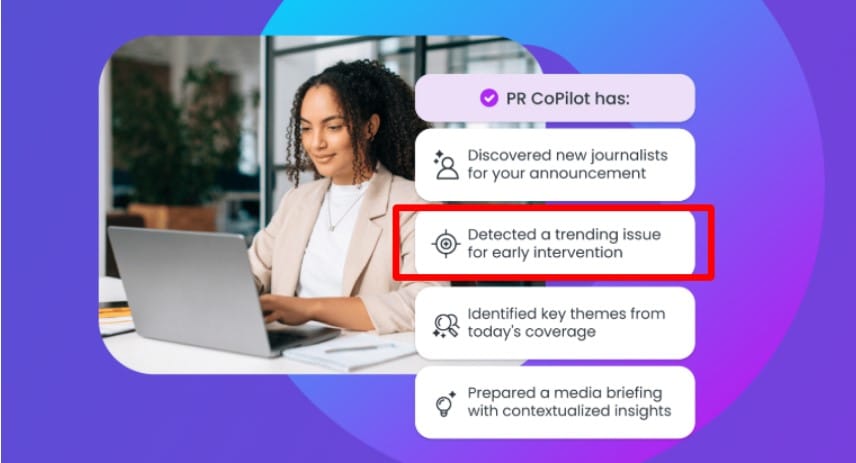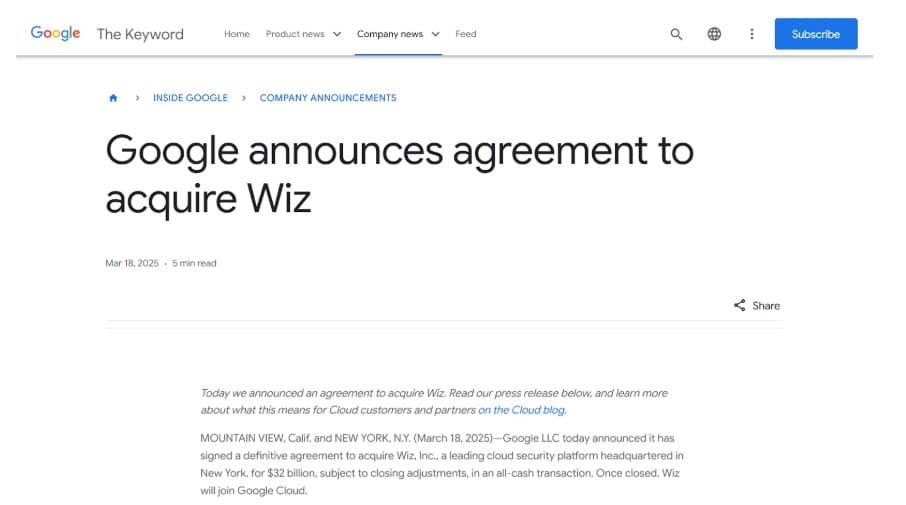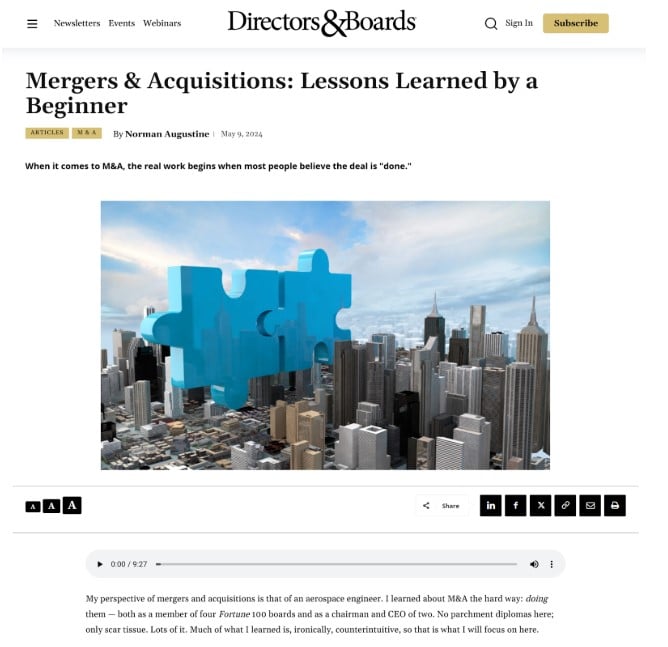When millions or even billions of investor funds are at stake, messaging timing and confidence help tip the scales.
Financials and legal terms are essential in any acquisition, but messaging is what makes the deal believable. From how you talk to employees and customers to how you handle the media, brand communication can either reinforce investor confidence or derail it.
Let’s take a close look at three main reasons speed and clarity in brand messaging are pivotal during high-dollar acquisitions.
1. First impressions affect buyer and investor confidence
A healthy brand perception is fundamental to investor confidence.
Buyers and investors form opinions quickly based on how a company communicates its message. A scattered or slow message implies disorganization.
The Journal of Financial Economics came up with some findings worth looking through that back this up.
Researchers analyzed video stills from the famous Shark Tank show and the Startup Battlefield competitions. They reviewed entrepreneurs’ facial traits using survey ratings and linked these impressions to investment decisions and business outcomes.

The study’s surprising results are in the table below:

The most interesting takeaway from this is the “charm” aspect.
Businesses can capture investor trust in mere seconds simply by being more charming.
Practically in your communications, this could look like:
- Using charisma to engage your audience: Show genuine passion and confidence in your business to create an emotional connection.
- Refining your tone and body language: Use relaxed hand and arm movements, like showing your palms or gently spreading your arms, to appear more approachable and trustworthy.
- Paying attention to your tone of voice: Speak clearly, calmly, and enthusiastically to convey confidence and keep listeners interested.
- Practicing your pitch and messaging ahead of time: Rehearse to avoid stumbling over your words. Smoothing out your delivery enhances your natural charm.
- Matching your messaging to your audience: Adjust your language and style to mirror the preferences of investors, employees, or customers.
- Being authentic: Express charm genuinely to avoid sounding rehearsed or insincere. (A tough one, but gets easier with practice.)
- Using storytelling to bring your message to life: Share your brand story with emotion and passion to make your communication memorable. Share other relatable and inspiring stories too. (Even in press releases, to add charm and a more human tone of voice.)
Make sure you also have access to brand alerts in real-time. If a negative mention comes up, you need to mitigate risk by addressing it immediately. More on speed in the following section.

2. Market reactions move faster than you do, fast messaging helps you control the narrative
News travels quickly. Competitors, media outlets, and industry influencers are often quick to spin stories. If your messaging isn’t quick and proactive, you risk losing control of the narrative.
Google’s $32 billion acquisition of Wiz is a study in how to get this right. Within hours of the announcement, questions surfaced … Would Google play favorites in multicloud environments? What happens to vendor neutrality?

Google didn’t fumble for answers. They led with clarity, emphasizing that Wiz’s CSPM (Cloud Security Posture Management) platform wasn’t another security tool. It automated major operations, cut down security overhead, and supported multicloud strategies.
That message hit three high-priority concerns before anyone else could fill in the blanks.
With a focus on exactly what made the acquisition strategic (and saying it fast), Google kept the conversation anchored in facts instead of bias.
The momentum helped align internal teams and calmed outside concerns. Most importantly, it protected the deal’s public framing before anyone else could reshape it.
The point is, it’s easy to think of messaging as polish.
But in moments like this, it’s strategic brand positioning. If your narrative isn’t ready to launch, someone else will write the opening chapter for you. And they won’t care whether it’s accurate.
Some practical tips to stay on top of concerns and be proactive include:
Keep key reports ready to demonstrate brand resilience
Track your company’s valuation closely and pull reports regularly.
If investment tools like LuxAlgo, which track market indicators, show your company’s valuation dipping sharply, you need quick access to internal reports. Use these to illustrate how profits rebounded after previous market fluctuations.
This reassures investors and stakeholders that your company remains resilient through market fluctuations.
Here’s an example:

Keep your employees and managers informed
When employees hear about an acquisition late or through rumors, their anxiety can cause internal disruption. (Like reduced productivity or even key talent leaving.) Internal instability can spill over externally, weakening investor confidence.
Investors and partners watch not just the financials but also company culture and operational stability during deals.
Clear, timely internal brand messaging helps maintain employee trust and focus, which supports smooth operations. Steadiness reassures investors that the company can handle change without losing momentum. (More on this in a bit.)
Keep your customers in the-the-know
Customer retention depends on reassurance. Acquisition news often unsettles customers, especially in B2B or high-value relationships.
They worry about changes to service, pricing, or support.
Fast, clear communication that explains what’s changing and what’s staying the same helps calm those fears. Silence or vague messaging creates uncertainty, which can influence them to look elsewhere.
If customers start leaving, it can jeopardize the acquisition itself, putting the deal at risk before it even closes. Ensure that your email communications and marketing campaigns clearly mention your upcoming deal to avoid any surprises.
You can also inspire customer engagement with gamified strategies or contests. (The ladder is a great way to build up user-generated content as social proof.)
3. Buyers need confidence in brand integrity post-acquisition
Brand equity influences the perceived value of the deal. Buyers want to see a brand that can not only survive the transition, but grow stronger on the other side.
Norman R. Augustine, retired chairman and CEO of Lockheed Martin, who currently serves on the Directors & Boards Editorial Advisory Board, has a lot of wisdom to share on the subject.

“There’s a fairly widely held belief that a fast and relatively easy way to expand a firm’s revenues and profits is to purchase another firm’s revenues and profits through M&A (Mergers and Acquisitions). Wrong! Numerous studies have shown that around 80% of mergers and acquisitions fail, Augustine says.
Yes, fail! That means that, if you do five M&A deals, the likelihood of having at least one fail is 99.84%.”
In other words, most of the risk comes after the handshake.
➜ Clear, confident messaging now shows that your team understands how to protect and build trust with customers, partners, and employees. This reassures buyers that the brand will remain a solid asset. This is pivotal to making the acquisition feel more attractive and less risky.
However, you must also consider the brand’s personality, culture, and leadership behavior during the integration process. These set the tone for a successful business after a merger or acquisition.
Augustine warns against careless dominating remarks like “We bought you,” which can fracture morale and performance.
It goes on to say that Lockheed Martin succeeded in unifying 17 merged firms by promoting collaborative dialogue and mutual respect from the outset.
“There is the common belief that once all the bankers, lawyers, regulators and reporters have disappeared, the deal is done. Wrong! The really hard part of M&A begins when the transaction, per se, has been concluded. That’s when things like excess facilities, conflicting cultures, differing benefit plans and incompatible management systems must be addressed.
In our case, there were 18 different payroll systems from 17 companies.”
Buyers pay attention to these signals. They’re not solely betting on a deal. They’re betting on your ability to lead through complexity. Messaging is one of the earliest indicators they use to judge that risk.
Practical ways to show you’re ready to lead through post-deal complexity
Here’s how your messaging can reflect operational readiness and cultural leadership:
Communicate that integration planning is already underway
Don’t wait until after the close to talk about integration. Communicate that you’re proactively addressing known friction points, like overlapping systems, facilities, or benefit plans.
Try an angle like: “We’ve already identified key areas for operational alignment, and we have a plan ready” to show leadership awareness.
Speak to culture, not just strategy
It’s tempting to focus solely on business outcomes, such as revenue, business growth, and expanding into new markets. But you also need to mention how you plan to preserve and blend culture with emotional depth.
(Buyers take this as a strong signal that you’re not underestimating people-side risk.)
Try an angle like: “We’re committed to honoring the unique strengths and values of both organizations as we build a unified culture.” Include this in your thought leadership content and LinkedIn content strategy, too.
Avoid power-play language
Internal messaging should reinforce unity instead of dominance.
When referring to legacy systems or staff from the acquired company, try angles like: “Our shared expertise,” or “joint planning efforts.”
Avoid using “ours” versus “theirs” messaging. (Add this to your brand guidelines and style guide so your team knows what terms to avoid.)
In your style guide, be sure to also include:
- Your unique value proposition
- Tone of voice preferences
- Your vision statement
- Messaging examples
- Your elevator pitch
Acknowledge complexity without sounding uncertain
Messaging doesn’t need to pretend integration will be easy. It’s more credible if you acknowledge the challenge while reinforcing confidence:
Try an angle like: “We know bringing together systems from three firms will take time, and we’re approaching that work with clear plans and the right people to execute them. Here’s what we’re working on right now …”
➜ Ultimately, you want your messaging to land that you’re not just here to close the deal. You’re here to make it work and you deeply care about doing this in a collaborative, respectful way.
Wrap up
In high-dollar acquisitions, the numbers may grab the headlines, but it’s your brand communication and messaging speed that often make or break the deal. Investors, employees, and customers are watching closely. (Not just at what you say, but at how quickly and clearly you say it.)
Your ability to lead through complexity, anticipate concerns, and communicate culture with authenticity builds trust long before the ink dries.
When every moment counts, a confident, well-timed message is your strategic advantage that can tip the scales in your favor.
Don’t leave your acquisition’s success to chance. Start planning your communication strategy now. Move fast. Speak clearly. And make every word count.
Need help? Reach out to AgilityPR for a tailored and confident messaging plan.
SPEAK TO AN EXPERT AT AGILITY PR SOLUTIONS NOW.



